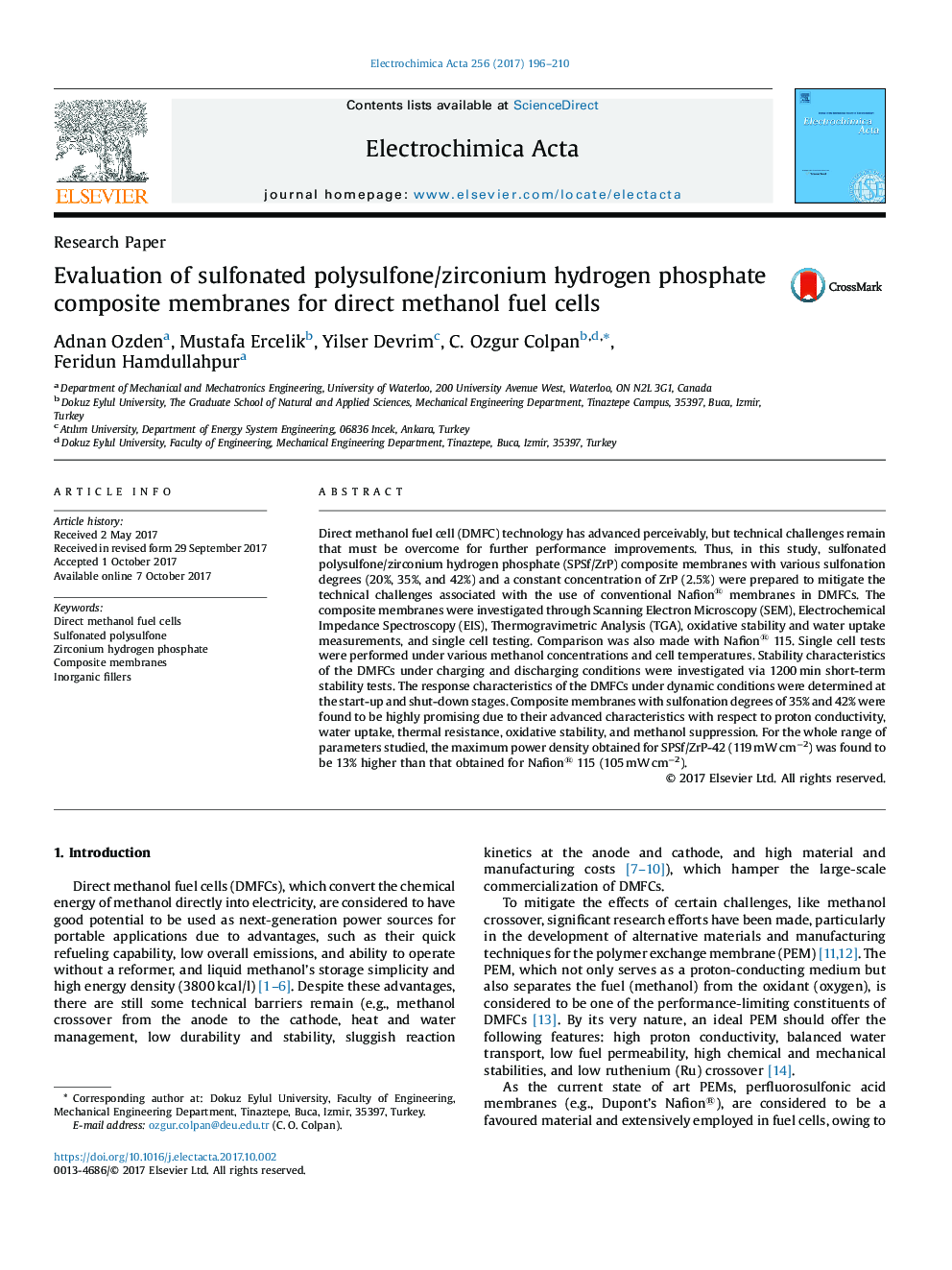| Article ID | Journal | Published Year | Pages | File Type |
|---|---|---|---|---|
| 4766625 | Electrochimica Acta | 2017 | 15 Pages |
Abstract
Direct methanol fuel cell (DMFC) technology has advanced perceivably, but technical challenges remain that must be overcome for further performance improvements. Thus, in this study, sulfonated polysulfone/zirconium hydrogen phosphate (SPSf/ZrP) composite membranes with various sulfonation degrees (20%, 35%, and 42%) and a constant concentration of ZrP (2.5%) were prepared to mitigate the technical challenges associated with the use of conventional Nafion® membranes in DMFCs. The composite membranes were investigated through Scanning Electron Microscopy (SEM), Electrochemical Impedance Spectroscopy (EIS), Thermogravimetric Analysis (TGA), oxidative stability and water uptake measurements, and single cell testing. Comparison was also made with Nafion® 115. Single cell tests were performed under various methanol concentrations and cell temperatures. Stability characteristics of the DMFCs under charging and discharging conditions were investigated via 1200Â min short-term stability tests. The response characteristics of the DMFCs under dynamic conditions were determined at the start-up and shut-down stages. Composite membranes with sulfonation degrees of 35% and 42% were found to be highly promising due to their advanced characteristics with respect to proton conductivity, water uptake, thermal resistance, oxidative stability, and methanol suppression. For the whole range of parameters studied, the maximum power density obtained for SPSf/ZrP-42 (119Â mWÂ cmâ2) was found to be 13% higher than that obtained for Nafion® 115 (105Â mWÂ cmâ2).
Keywords
Related Topics
Physical Sciences and Engineering
Chemical Engineering
Chemical Engineering (General)
Authors
Adnan Ozden, Mustafa Ercelik, Yilser Devrim, C. Ozgur Colpan, Feridun Hamdullahpur,
